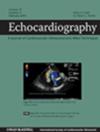Inclusion of the Right Ventricular Muscle Bundle During Interventricular Septal Measurement Improves Diagnostic Accuracy for Hypertrophic Cardiomyopathy
Abstract
Introduction
Measurement of the interventricular septum (IVS) is a key diagnostic and prognostic parameter in the evaluation of hypertrophic cardiomyopathy (HCM). Right ventricular muscle bundles (RVMB) that parallel the IVS complicate septal measurement on both echocardiography and magnetic resonance imaging. Current guideline statements reference left ventricular wall thickness measurements greater than or equal to 15 mm as part of the diagnostic criteria for HCM. The medical literature lacks published data on the impact of including RVMB as part of the IVS measurement and its influence on diagnostic accuracy for HCM.
Methods
We measured the IVS and RVMB separately on echocardiography in 97 consecutive subjects referred for both echocardiography and magnetic resonance imaging (MRI) as part of the initial evaluation for HCM. Subjects were categorized as having or not having HCM based on current practice guidelines. Patients with HCM were sub-categorized as having septal involvement (HCM-Sep) or primarily apical hypertrophy (HCM-Ap). This was done because subjects with obvious HCM-Ap could be diagnosed with HCM irrespective of IVS thickness.
Results
Compared to subjects who did not have HCM, those with HCM-Sep had both increased IVS (15.4 ± 2.7 vs. 9.8 ± 1.9 mm, p < 0.001) and RVMB thickness (5.2 ± 3.1 vs. 1.9 ± 1.9 mm, p < 0.001). In the whole study group, the area under the receiver operating characteristic (ROC) curve for HCM was higher (0.83 [95% confidence interval (CI): 0.75, 0.91]) when the RVMB was included in the IVS measurement compared to when it was excluded (0.75 [95% CI: 0.68, 0.81]). When the subjects with HCM-Ap were excluded, the area under the ROC curve for HCM was higher (0.94 [95% CI: 0.89, 0.99]) when the RVMB was included in the IVS measurement compared to when it was excluded (0.82 [95% CI: 0.75, 0.89]). The number of subjects classified correctly for HCM improved from 78% to 94% when the RVMB was included.
Conclusions
Inclusion of the RVMB in the measurement of IVS thickness on echocardiography may improve overall diagnostic accuracy for HCM. In addition, RVMB thickness is increased and is more often visible on parasternal long-axis imaging in subjects with HCM, consistent with being part of the HCM pathology. This is particularly true in those with HCM-Sep. These data have implications for the standardization of echocardiographic and MRI reporting in HCM.

 求助内容:
求助内容: 应助结果提醒方式:
应助结果提醒方式:


